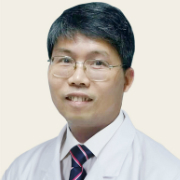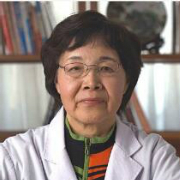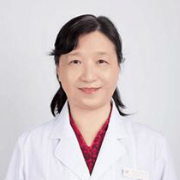-
- 李博主治医师 讲师
-
医院:
中国中医科学院西苑医院
科室:
消化科(脾胃病科)
- 腹胀便秘简易自我治疗
- 门诊中的孙子兵法??治疗便秘的...
- Muhimbili莫西比利医院...
- 搜狐转载北京晚报-医患共同守护...
- 守候你的大便
- 中医的异病同治??从中药的性别...
- 关于忌口??消化医生与美食家
- 中医是怎么回事--郝万山教授对...
- 甫寸《科学新生活》-认识反流性...
- 胃癌前病变并不可怕--如何面对...
- 反流性食管炎的中西医合作循证诊...
- 重新认识来医院的目的
- 医生的助手和秘书
- 胃酸过多之中西医合作降阶治疗
- 春季谈养肝
- 如何网上咨询诊疗(医患问答示范...
- 网络和电话诊疗疾病应慎重
- 平安夜及圣诞节的门诊(感恩我的...
- 医生无所谓就诊顺序(告诉患者加...
- 关注简单小病的诊疗才重要
- 做一个明白的病人(描述自己病情...
- 每一个患者都是一段故事
- 快速而且事半功倍的诊疗(端正看...
- 以身试病与坦然“面”对??面部...
- 守候你的月经
- 信任是海
- 做医生的乐趣
- 抗生素治病也致病(正确认识合理...
- 门诊中的孙子兵法??治疗便秘的...
- TCM in Muhimbil...
- HP幽门螺旋杆菌阳性怎样治疗?
- 夏季气候养生杂谈
- 夏季烫伤的自救
- 夏季常见突发病症及自救宝典
- 夏季溺水急救
- 夏季出汗与喝水的学问
- 健康“清”凉一夏――夏季养生杂...
- 吃在夏天??在夏季胃口大开-夏...
- 胃溃疡,胃下垂应该注意哪些问题
- 胃溃疡,胃下垂应该注意哪些问题
- 慢性萎缩性胃炎如何治疗
- 慢性胃炎,胆囊息肉该如何治疗?
- 长期便秘,已七八年之久,如何治...
- 来坦桑尼亚6个月门诊体会
- 自拟“三四五汤”治疗盆腔炎-坦...
- 从我的一个坦桑病例看中医的异病...
- TCM for Treatme...
- TCM for Obesity...
- YIN AND YANG-TH...
- SPECIFIC AND PR...
- 治疗口腔溃疡的一些方法
- 胖大海外用治疗红眼病
- 经期腹泻可能会导致不育
- 妇科妙药-益母草
- 藿香正气并不通治所有类型的感冒
- 合理服用板蓝根
- 中药房淘宝??春天的陈皮乌梅
- 服用自制中药保健品要慎重
- 如何服药有讲究-正确服药
- 夏季口疮的预防治疗
- 夏季祛暑保健小方
- 对症进补,拒绝乱补,正确选补
- RADITIONAL-CHINESE MEDICINE WITH A LONG HISTORY
- 作者:李博|发布时间:2008-10-18|浏览量:1739次
|
Traditional Chinese medicine (TCM) has a history of several years. Its origin can be traced back to remote antiquity. In a long course of struggling against diseases, TCM evolved into a unique and integrated theoretical systcm of TCM. It is an important part of Chinese culture. More than 2,000 years ago, came out Huangdi"s Classic on Medicine( Huang Di Nei jing ), which is the earliest medical classic extant in China. It consists of two parts?Basic Questions ( Su Wen ) and Miraculous Pivot( Ling Shu ), each comprising) nine volumes, each of which, in turn, contains nine chapters, totaling up to 162 chapters.The book gives a complete and systematic exposition to the following various subjects : the relationship between man and nature, the physiology and pathology of the human body, and the diagnosis, treatment and prevention ot diseases. It also uses the theories of yin-yang and the five elements to deal fully with the principles of treatment by differentiation of syndromes (TDS) according to the climatic and seasonal conditions, geographical localities and individual constitution. Hence( giving expression) to the holistic concept of taking the human body as an organic whole and taking the human body with the surrounding environment as the integrity. It laid a preliminary foundation for the theoretical formation of TCM. After Huangdi"s Classic on Medicine another classic of medicine, Classic on Medical Problems ( Nan Jing ), was given birth to the world before the Eastern Han Dynasty. The book deals mainly with the basic theory of TCM, such as physiology, pathology, diagnosis and treatment of diseases and so on. It supplemented what Huangdi"s Classic on Medicine lacked. From then on, many medical schools and various classics on medicine were brought into being in succession, each having its own strong points.中国中医科学院西苑医院消化科(脾胃病科)李博 |
|
Shen Nong"s Herbal ( Shen Nong Ben Cao Jing ), also known as Classic on the Herbal (Ben Cao Jing ) or The Herbal ( Ben Cao ), is the earliest book on materia medica in China, which appeared in about the Qin-Han Period with its authorship unknown. Not only does it list 365 medicinal item ?among which 252 are herbs, 67 are animals, and 46 are minerals, but also divides them into three grades according to their different properties and effects. The book also gives a brief account of pharmacological theories?principal (jun ), adjuvant (chen ), assistant ( zuo ) and guide (shi ); harmony in seven emotions ( qi qing he he ), four properties of medicinal herbs ( si qi ) and five tastes of medicinal herbs ( wu wei ). |
|
In the Han Dynasty (3rd century AD ), Zhang Zhongjing, an outstanding physician, wrote Treatise on Febrile and Miscellaneous Diseases ( Shang Han Za Bing Lun ), which is divided into two books by later generations, one is entitled " Treatise onFebrile Diseases", ( Shang Han Lun ) , the other Synopsis of Prescriptions of Golden Cabinet (Jin Kui Yao Lue ) . The book established the pnriciple of TDS(Treatment of Differentiation Syndromes;Technical Data System 技术数据系统), thereby laying a foundation for the development of clinical medicine. |
|
In the Western Jin Dynasty. Huang Fumi, a famous physician, compiled A-B Classic of Acupuncture and Moxibustion (Zhen Jiu Jia Yi Jing ) The book consists of 12 volumes with 128 chapters, including 349 acupoints. It is the earliest extant work dealing exclusively with acupuncture and moxibustion and one of the most influential works in the history of acupuncture and moxibustion. |
|
The Sui and Tang Dynasties came into their own in feudal economy and culture. In 610 AD, Chao Yuanfan et al. compiled General Treatise on the Etiology and Symptomology. The book gave an extensive and minute description of the etiology and symptoms of various diseases. It is the earliest extant classic on etiology and symptoms in China. In 657 AD, Su Jing together with 20 other scholars, compiled Newly-Revised Materia Medica ( Xin Xiu Ben Cao ) , which is the first pharmacopoeia sponsored officially in ancient China, and the earliest pharmacopoeia in the world as well. Sun Simiao (581-682 AD) devoted all his life to writing out the two books: Valuable Prescriptions for Emergencies (Bei Ji Qian Jin Yao Fang ) and Supplement to Valuable Prescriptions ( Qian Jin Yi Fang) . The hooks deal with general medical theory, materia medica, gynecology and obstetrics, pediatrics, acupuncture and moxibustion, diet, health preservationand prescriptions for various branches of medicine. Both books are recognized as representative works of medicine in the Tang Dynasty. Sun Simiao was honored by later generations as "the king of herbal medicine". |
|
In the Song Dynasty, more attention was paid to the education of TCM . The goverment set up"the Imperial Medical Bureau" for training and bringing up qualified TCM workers. In 1057 AD, a special organ named "Bureau for Revising Meidical Books" was set up in order to proofread and correct the medical books from preceding ages, and to publish them one after another. The books revised have been handed down till now and are still the important classics for China and other countries to study TCM. |
|
In the Jin and Yuan Dynasties, there appeared four medical schools represented by Liu Wansu ( 1120-1200 AD ), Zhang Congzheng ( 1156-1228 AD), Li Gao ( l180-1251 AD) and Zhu Zhenheng ( 1281-1358 AD). Among them, Liu Wansu believed that "fire and heat" were the main causes of a variety of diseases, and that the diseases should be treated with drugs cold and cool in nature. So he was known as "the school of cold and cool" by later generations, Zhang Congzheng believed that all diseases were caused by exogenous pathogenic factors invading the body, and advocated that pathogenic factors should be driven out by methods of diaphoresis, emesis and purgation. So he was known as the "school of purgation". The third school represented by Li Gao held that "Internal injuries of the spleen and stomach will bring about various diseases". Therefore, he emphasizeed that the most important thing, clinically, should be to warm and invigorate thespleen and stomach because the spleen is attributed to the earth in the five elements. So he was regarded as the founder of the "school of reinforcing the earth". And the fourth school was known as the "school of nourishing yin" by founded Zhu Zhenheng. He believed: "Yang is usually redundant, while yin is ever deficient". That is why the body "often has enough yang but not enough yin". So he usually used the method to nourish yin and purge fire in clinical practice. |
|
Li Shizhen (1518-1593 AD), a famous physician and pharmacologist in the Ming Dynasty, wrote The Compendium of Materia Medica ( Ben Cao Gang Mu ). The book consists of 52 volumes with 1,892 medicinal herbs, including over 10,000 prescriptions and 1,000 illustrations of medicinal items. In addition, his book also deals with botany, zoology, mineralogy, physics, astronomy, meteorology, etc. It is really a monumental work in Materia Medica. It is a great contribution to the development of pharmacology both in China and all over the world. During the same period, acupuncture and moxibustion reached their climax. Many literature concerning acupuncture and moxibustion for the ages were summarized and developed. |
|
Since the founding of New China, our government has paid great attention to inheriting and developing the heritage of TCM and Materia Medica. A series of policies and measures have been taken for developing TCM. In 1986, the State Administrative Bureau of TCM and Materia Medica was established. This leading body is the guarantee of developing TCM and Materia Medica smoothly. Never before has TCM been as prosperous as it is today. TCM has experienced many vicissitudes of times but always remains evergreen. There is no doubt that TCM will take its place in medical circles of the world as a completely new medicine. |
TA的其他文章:




